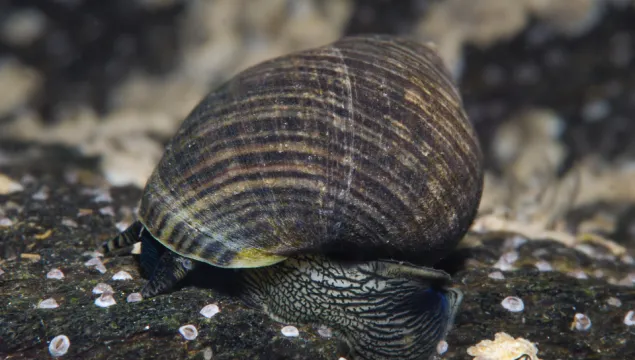
Edible periwinkle
Edible periwinkles are a common sight when rockpooling and can be found in huge numbers on the shore.

Edible periwinkles are a common sight when rockpooling and can be found in huge numbers on the shore.
These non-native limpets arrived from America in the 19th century and are now widespread in the UK. They form stacks and have a specially adapted shell which, when flipped upside down, looks like a slipper!
This small sea snail is easily identifiable by the 3 brown spots on the top of its shell.
This sea snail is abundant on rocky shores around the UK. It is an active predator, feasting on mussels and barnacles before retreating to crevices to rest.
This jagged-shelled sea snail is normally found near its favourite food - oysters!
The common whelk is the largest sea snail found in UK seas, though you're more likely to find the dry balls of empty whelk egg capsules washed up in strandlines.
This long-lived bivalve can be found buried in the sand on the south and west coasts of the UK.
The Common mussel is a familiar sight on shores all around the UK and is a favourite food of people, seabirds and starfish alike.
Native Oysters are a staple of our seas and our plates - but our love of their taste has lead to a sharp decline all around the UK.
Great scallops are found around much of the UK and are a favourite seafood for people and starfish alike!
The shells of this small scallop are often found washed up on our shores and comes in lots of different colours, including pink, red, orange and purple.!
The common cockle is a traditional seaside favourite, both for its white shells often found in the sand and for the yummy snack of cockles doused in malt vinegar.